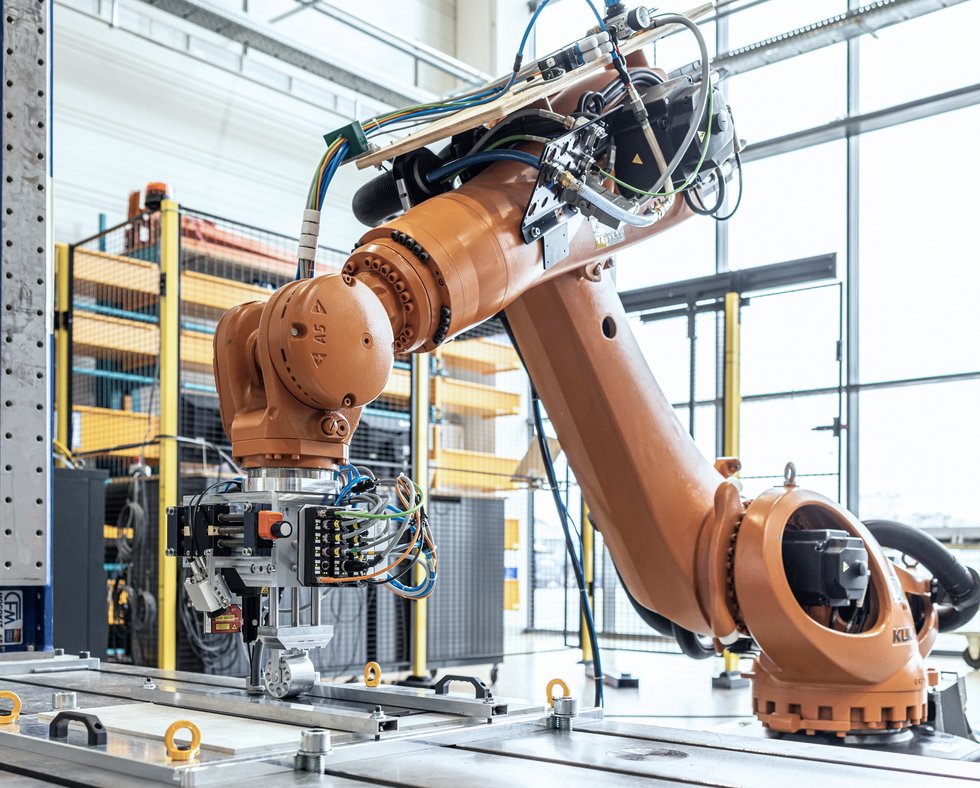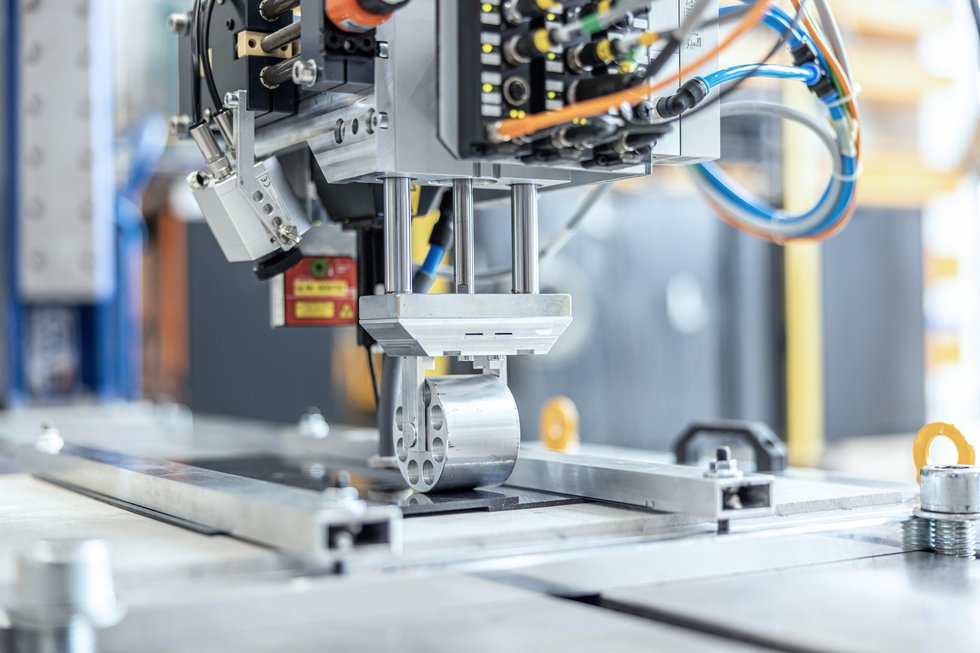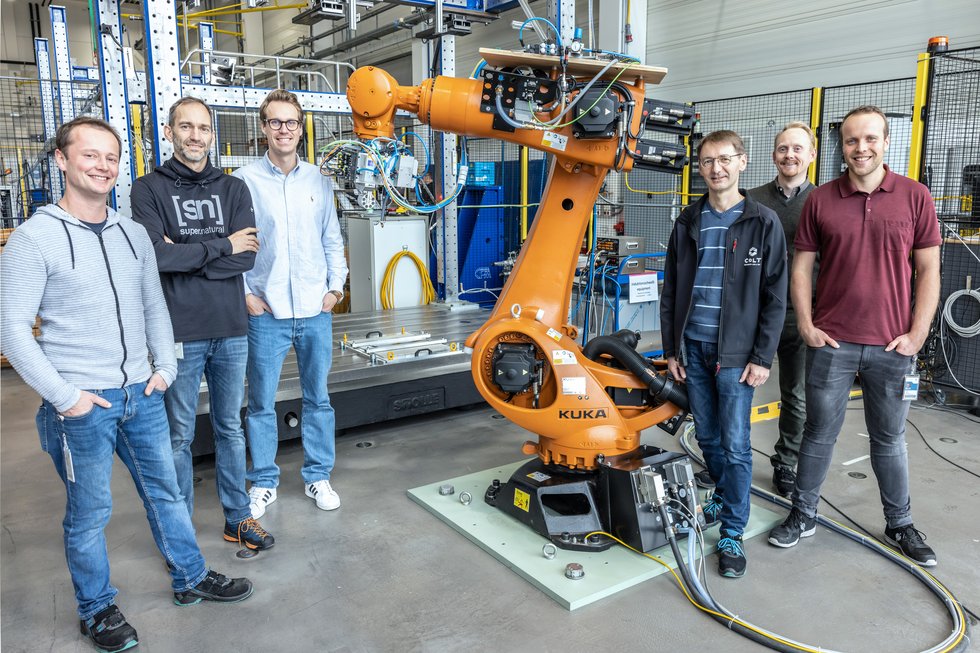Research into new materials, technologies and manufacturing processes is one of FACC’s key fields of activity. It ensures the company’s longterm competitiveness and lasting success on the path towards a sustainable future of aviation.
At FACC, fundamental research into new processing technologies and production methods typically provides the starting point for new product innovations. The Wing of Tomorrow project is a prime example for this. Together with Airbus, the company is working on the design of next-generation aircraft wings. Innovations that can be showcased to the public today began with extensive basic research, which initially focused on the question of how new materials and processes can be used to reduce production time and complexity as well as the intensity of investment to enable an even more economical production of aircraft wings in the future.
Another research focus at FACC addresses the question of whether, and in what way, newly developed materials and material combinations are generally suitable for the production of aircraft components. Are the mechanical properties of these materials compatible with the customer’s requirements and a high-rate production process? Here, too, the primary objective is to develop efficient industrial processes allowing the economical processing of a new material into sophisticated components.
In this way, FACC is positioning itself as a strong technology partner capable of providing its customers with exactly the right materials and production technology for each project, thus allowing the desired product to be implemented with optimal properties.

Focus on materials processing
Research teams at FACC are currently focusing on the processing of so-called thermoplastics and thermosets. These synthetic materials exhibit different characteristics. They are used for the production of complex molded parts that have a variety of mechanical properties and which have to fulfill different functions. The most important difference between thermoplastics and thermosets is that the latter cannot be melted again once they have been cured at high temperatures and pressure. The shape of the resulting structures is unalterable. This is not the case with thermoplastics which can, in principle, be reheated and subsequently reshaped or transformed without limit.
This property naturally leads to a topic that is becoming increasingly important for FACC’s research work as a whole: the circular economy. While components made of thermosets or numerous other composite materials can essentially only be recycled thermally or chemically after their use, thermoplastics can be formed into new products in a downcycling process. A further advantage is that thermoplastics can be welded together due to their aforementioned malleability, eliminating the need to add external material to the component. This is desirable in view of another goal that FACC is pursuing in the development of its products: rivets, bolts, screws and adhesive seams are to be eliminated from aircraft components as far as possible. This is because they are difficult to process, slow down production processes due to the installation steps required and, on top of that, increase the weight of the product.
It therefore comes as no surprise that FACC is researching the processing of such materials. However, in order to integrate them into series production at the Group’s plants, a technological transformation is often required. FACC’s research team is continuously working on further developing the company’s facilities and production processes for the processing of novel and promising materials.
Close communication with customers
Customers from all over the world value FACC’s open communication in matters of research and technology. This enables the Group to align its research priorities precisely with the needs of its customers, for instance when weight reduction or sustainable solutions are required. On the basis of this open dialogue, FACC decides which technologies to focus its research on. Well-founded decisions are essential here as investments in research projects, which require financing over many years, are often substantial.
Once FACC has committed to a field of research, the Group usually achieves excellent results very quickly. Examples include thermosets and resin transfer molding (RTM), a promising manufacturing process for composite components designed to make highly complex geometric component shapes possible.

Focus on production processes
Material composition and processing is by no means the only area of research at FACC. Another focus is on the vast field of production processes. Here, the company wishes above all to increase its degree of automation. There are several reasons for this, starting with production stability: Machine-based production increases the robustness of manufacturing processes and enables high capacity utilization in production. Then there is the issue of economic efficiency: In a highly competitive environment, FACC has to offer its customers not only the very best products, but also economic advantages – automation often proves to be an effective lever in this respect. Finally, Europe’s industry is confronted with a genuine shortage of skilled workers – this also contributes significantly to the push for automated production processes.
Cooperation in basic research
Within this branch of research, which largely comprises basic research, FACC relies not only on in-house research projects but also on close cooperation with universities and other institutions of higher education, such as the Johannes Kepler University in Linz. One of these cooperation projects deals with networked production systems for the automated manufacture of fiber composite components, including inline process monitoring. Another project deals with digital process mapping and digital twins. Here, too, the focus is on the circular economy. Admittedly, the efforts required in the case of long-term projects in the field of basic research are considerable. Nevertheless, they can pay off in the medium to long term and form the basis for revolutionary – even disruptive – new technical processes.
There are further good reasons why cooperative research partnerships form a main pillar of FACC’s strategy: when cooperating with customers and partners from industry and science, research findings are not the only result. Through collaborations, FACC also acquires comprehensive know-how, deepens partnerships with customers and suppliers, and establishes contact with potential new members of staff. In the area of basic research, FACC also benefits from public and institutional funding, which additionally boosts the Group’s research budget.
Sustainability in the spotlight
As mentioned previously, FACC’s research strategy has received fresh impetus in recent years: methods, materials and technologies are assessed for their ecological impact in every single research project.
FACC is currently in the process of establishing a system to record sustainability indicators for all of its products. The aim is to track energy and material consumption as well as emissions occurring during the life cycle of a component, not only at FACC, but along the entire value chain up to recycling and processing – from the cradle to the grave, so to speak. The data collected in the course of this life cycle assessment will subsequently be integrated even more closely into the Group’s research activities. After all, it is only by gaining a thorough understanding of the impact of processes and materials on the environment that they can be adapted and further developed in the interests of sustainability and the circular economy.

Lightweight construction for environmentally friendly flights
One fundamental premise of FACC’s sustainability strategy remains unchanged: as a cross-sectional technology, lightweight construction is, and remains, the most effective lever for making air travel even greener in the future. After all, the production of an aircraft including all its components only accounts for a small fraction of its carbon footprint. The largest part is attributable to flight operations. Here, the solution is to minimize weight through an efficient use of materials while simultaneously fulfilling all customer and safety requirements.
Ecological solutions for Interiors
The research focus of FACC has recently shifted to the Group’s Interiors division, which deals with the development and production of aircraft cabins. Here, manufacturers worldwide are currently pursuing one trend in particular: a resin system based on a residual material obtained from the processing of sugar cane. As one of the key players in this field, FACC introduced its new aircraft cabin concept based on this renewable material at the AIX aviation fair in Hamburg in June 2022. This was preceded by extensive research and development activities in the field of manufacturing processes. With this new cabin concept, FACC has developed a product that perfectly meets the universal demand for greener air travel.
Award-winning research
The scientific community has also honored FACC’s intensive research efforts, thus validating the Group’s consistent innovation strategy: The research team received the highly coveted 2022 Research Award of the Christian Doppler Society for developing a non-destructive component testing procedure in cooperation with the University of Applied Sciences in Wels and other partners. The innovative quality assurance process helps FACC achieve significant cost and competitive advantages in component testing. The prestigious award of the Christian Doppler Society is further acknowledgement of the Group’s research activities.
Ongoing research and technology development projects at FACC
Currently, FACC is involved in more than 20 different research projects exploring ways to make flying more environmentally friendly, safer, more economical and more comfortable in the future. These range from experiments in material processing and the optimization of manufacturing processes to the development of specific aircraft components using new materials and processes.